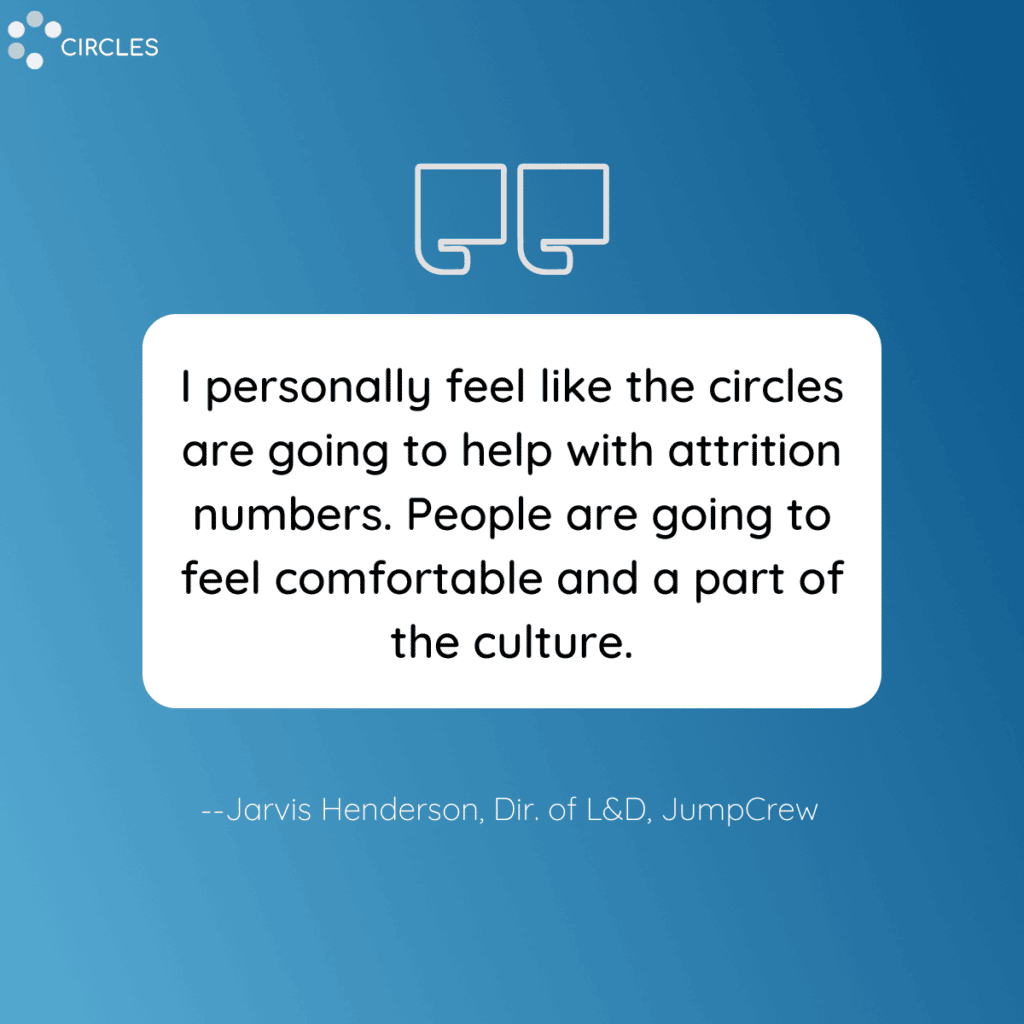Just when it seemed the great resignation was in the rearview mirror, quiet quitting swooped in to dominate corporate headlines. Hybrid workspaces are here to stay and bring their own set of challenges, like employee loneliness and lack of connection. All this to say, talent retention and employee engagement remain top-of-mind for HR leaders, maybe more now than ever.
Many of us want to work remotely–but does the resulting distance prohibit thriving? Accordingly, leaders scramble for systems and structures to mitigate turnover and maintain employee connectivity.
Our own community of practice continues to innovate strategies to help employees connect and grow. Fresh from the field, here are six paths to actively fostering employee engagement:
- Connect Employees Before They’re Hired
One consulting company drives engagement even before hiring, grouping recruits into collaborative circles. Prospects join a customized experience of discussion-based workshops, involving open-ended problem solving guided by facilitators. Adding recruiting circles to their collaborative company culture helps employees develop relationships early–and on a global scale.
- Create Community Once They’re on Board
Every month, Weave: The Social Fabric Project at the Aspen Institute offers new and existing members an opportunity to sign up for a circle during onboarding. Weavers in circles report a sense of belonging in the community, and they’re more likely to reach out to others and engage in virtual discussions. Some circles continue meeting even after working through the initial onboarding agendas. Community Manager Frances Kraft shares: “When you have a good facilitator who sets the tone and the participants settle upon agreements together, people slow down and listen – not to respond, but to understand.”
- Fuel Employee Resource Group Breakouts
At the height of the pandemic, Glassdoor head of DEI Stephanie Felix promoted engagement through ERG breakout circles. “In a company that is majority culture, we wanted to create space for safe conversations regarding identity, culture, and belonging. Our aim was to provide intentional space for meaningful conversations around intersectionality.” At a time when employee connections had dwindled down to their immediate teams, organizing them into cross-department breakouts gave everyone the chance to interact with colleagues they wouldn’t normally interact with everyday.
- Coaching in Cohorts
Jean-Pierre Taschereau connects Red Cross employees through coaching teams across Canada. He explains: “People shift gears when they come into team coaching. We’re creating space for a different kind of conversation.” His coaching conversations have less to do with any specific team or topic–it’s about how people talk to each other. The conversations are not on-the-fly and rapid like other work conversations–people have time to think and share. “It’s like working a different part of your core. You work a different muscle group, and then when you go back to your regular job, you can do it better because your other muscles are stronger.”
- Foster Professional Development through Peer Groups
Marketing company JumpCrew builds their leadership bench by offering employees career path circles. Employees gain cross-departmental connections, and many attribute their internal network & multiple promotions back to their circles. Of the 300 and counting Jumpcrew employees, half are local to Nashville while the other half work remotely. Circles keeps distributed teams connected while helping identify and develop leaders.

“I personally feel like the circles are going to help with attrition numbers. People are going to feel comfortable and a part of the culture.”
–Jarvis Henderson, Dir. of L&D, JumpCrew
6. Drink Your Own Champagne
This last one is for HR leaders themselves–how can you connect and grow while caring for everyone else? Our partners at Executive Growth Alliance suggest peer circles.
The EGA community bridges the gap between individual executives facing common challenges. Membership provides connection into a worldwide network of leaders collaborating regularly in circles; executives from Merck, Adobe, IBM Nordic and more participate in EGA’s peer network. Shokofeh Khan–Director of Learning and Development at ACE Hardware–describes the peer circles as “an amazing experience. My learning was night-and-day greater than if I had just taken a set of seminars.”
Hosting Affinity Circles of our own
It’s thrilling to see all the ways our partners connect and grow their employees in circles. Inspired by peer connections provided by partners like EGA, we recently developed our own women in leadership circles–which garnered such positive feedback that we spun off other circles specific to DEI leaders, Learning & Development leaders and more. We now host multiple groups a week, connecting executives together in mutual support to navigate a rapidly evolving corporate landscape together.
Are you looking for a place to engage with HR peers? We have a circle for you! Please complete this form if you’re interested to join our one-off, free of charge Circles Community sessions.
